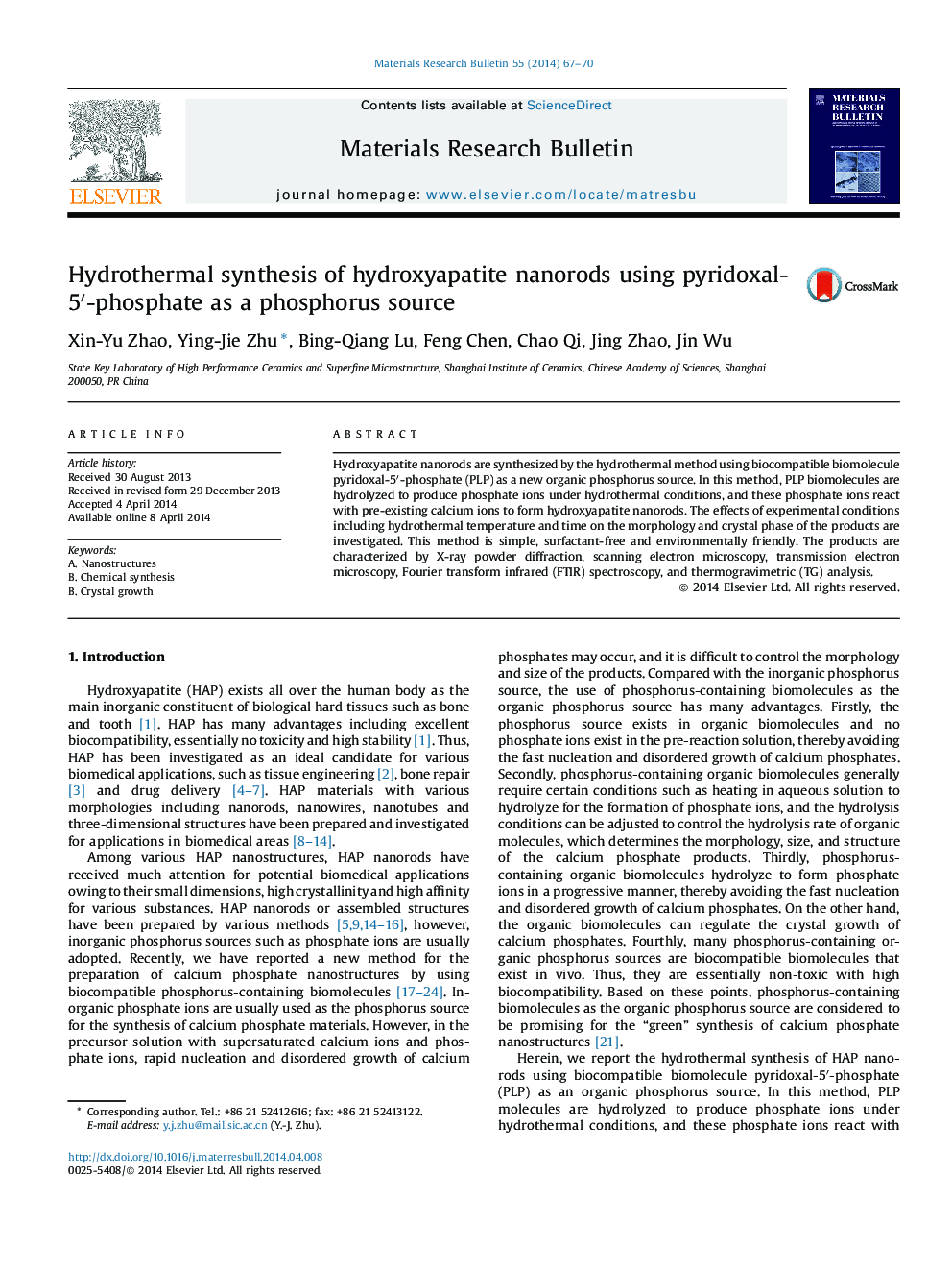| Article ID | Journal | Published Year | Pages | File Type |
|---|---|---|---|---|
| 1487960 | Materials Research Bulletin | 2014 | 4 Pages |
•Hydrothermal synthesis of hydroxyapatite nanorods is reported.•Biocompatible pyridoxal-5′-phosphate is used as an organic phosphorus source.•This method is simple, surfactant-free and environmentally friendly.
Hydroxyapatite nanorods are synthesized by the hydrothermal method using biocompatible biomolecule pyridoxal-5′-phosphate (PLP) as a new organic phosphorus source. In this method, PLP biomolecules are hydrolyzed to produce phosphate ions under hydrothermal conditions, and these phosphate ions react with pre-existing calcium ions to form hydroxyapatite nanorods. The effects of experimental conditions including hydrothermal temperature and time on the morphology and crystal phase of the products are investigated. This method is simple, surfactant-free and environmentally friendly. The products are characterized by X-ray powder diffraction, scanning electron microscopy, transmission electron microscopy, Fourier transform infrared (FTIR) spectroscopy, and thermogravimetric (TG) analysis.
Graphical abstractHydroxyapatite nanorods are synthesized using biocompatible biomolecule pyridoxal-5′-phosphate as a new organic phosphorus source by the hydrothermal method.Figure optionsDownload full-size imageDownload as PowerPoint slide
